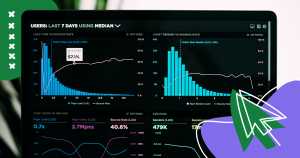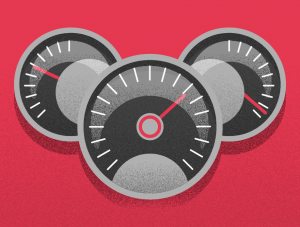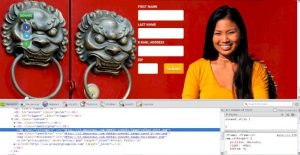LinkedIn is the biggest online professional network for businesses.
It’s a great social media platform that can help you connect with other professionals, businesses, and individuals for recruitment.
As social media marketing has become more competitive, getting an advantage on LinkedIn has become more difficult for brands.
Knowing tips and tricks for performing well depends on knowing what to post on LinkedIn.
Unlike other social platforms, LinkedIn is targeted towards other professionals, meaning that the tactics you use are going to be different from other platforms.
It’s solely a business platform, meaning no vacation pics or funny video shares.
- So, what types of content are best to post on LinkedIn?
- And what types of content should be avoided?
This blog will help you learn everything you need to know about LinkedIn posting, including the best days and times to post, and posting frequency.
What to Post on LinkedIn?
LinkedIn isn’t a platform for sharing personal photos or memes.
As a professional platform, the content that needs to be posted should be relevant to your business and services without being a sales pitch.
Once you know what to post on LinkedIn, you can easily incorporate the platform into your social media marketing strategy. Here are 7 content ideas:
1. Adding Links to Your Blog, Portfolio, or Website
Your posts on LinkedIn should bring in traffic to the pages that matter and that convert.
By adding links in your posts to relevant blogs, portfolios, or your company website, you can bring in your audience and help them become customers.
You can also use your blogs and pages to build your brand up as a thought leader in your industry.
By providing useful information that is branded for your business, you can help your audience find what they are looking for while subtly promoting your products and services.
2. Using Hashtags
Like other social media platforms, hashtags are an important part of your social media marketing strategy.
These are hyperlinks within the social media platform that help find posts and organize your own content.
By clicking on a hashtag, you can quickly find other related posts to look at and monitor your competition.
Hashtags are important, and using the right ones will help to bolster your social media marketing strategy.
Doing hashtag research to find the best and most effective hashtags for your brand, industry, location, and audiences will be a big help.
3. Publishing Relevant and Helpful Content
People looking for answers on social media want your business and industry expertise to help them out.
By posting relevant and helpful content instead of self-promotional and sales-focused content, you can address audience concerns and build strong relationships with your customers.
A great way to be helpful to your audience is to create a blogging and posting strategy that answers key questions and addresses complicated topics that you can use your expertise to solve.
That means that you are creating new content that is shared on LinkedIn to set yourself apart as a thought leader.
4. Covering Industry Topics
Another way to provide useful information is to act as almost a news source for industry topics.
If you can give updates and explain trends in your industry, you gain authority as a brand and help your audiences find important information.
You can also help new leads and audience members find your content by posting information about things that are interesting to them and aren’t related to your products or services.
When you can become a go-to source for important industry topics, you can build a following that can then be added into your sales funnel.
5. Posting Regularly
Regular posting can help you build a reliable audience and have regular, returning readers to your posts.
When your audience knows exactly when you are posting, you might even become the reason they log onto LinkedIn in the morning.
Regular posting also helps you appear more often on LinkedIn feeds.
When you aren’t posting consistently, your audience members aren’t going to be aware of when posts come up.
Then, when you post important company updates or exciting deals, your audience isn’t going to be aware of what you are offering.
6. Being Consistent
Not only do you need to post regularly, but you need to be consistent in the content of your posts.
If you consistently post helpful blogs and industry news, then all the sudden start pushing your services, you can alienate and confuse your audience.
Consistent content combined with reliable posting times helps the audience feel safe and comfortable with your LinkedIn profile.
It also means that your leads and prospects know what to expect and won’t suddenly unfollow or leave your page.
7. Mentioning Companies, Influencers, and Others
In addition to talking about your own brand, you should mention your connections, other companies, and influencers who are relevant to your brand and industry.
When you tag or mention other important players, you can not only be found by their audiences, but you increase your odds of being shared and commented on by those same people or organizations.
Make sure you practice some restraint when tagging.
You don’t want to be known as a brand that doesn’t have original ideas but only mentions others’ posts. By mentioning your connections, you can build stronger business relationships.
What Should You Avoid On LinkedIn?
Just as there are content ideas and posts that can bring you success on LinkedIn, there are also things that you can post that will hurt your social media marketing efforts.
LinkedIn is at its core a professional platform, so when you post inappropriate things, it can have severe negative repercussions on your organization.
Here are five things to avoid when you consider what to post on LinkedIn:
1. Controversial Posts
Posting a polarizing or controversial post can quickly drive your audiences away.
Extreme views and points of view will isolate certain audience segments and ruin your chances of creating strong, lasting business relationships with your customers.
Personal beliefs are best saved for a platform designed for casual use.
When you polarize your audience, even the best of products or services won’t be enough to bring those who feel targeted or isolated by your ideas back.
Your main goal as a business is to get a large customer base so you can grow and build your brand. Avoiding controversial posts altogether is the best course of action.
2. Political or Religious Posts
Political and religious topics are a minefield in any context. Even close families and friend groups can be divided on these complicated topics.
Unless your brand is a political organization or religious institution, you should avoid these types of posts.
You should also avoid liking or commenting on other posts in this vein, as your commenting and like history is available to followers and target audiences.
Again, saving your hot-button thoughts and opinions is best saved for a personal platform, not a professional one.
3. Sales Pitch Posts
While LinkedIn is a professional platform, it’s not a sales pitch arena.
If your posts are nothing but advertisements for your products or services, you likely won’t gain a large audience.
People are interested in relevant information and helpful blog posts, not sales posts.
Your goal on LinkedIn should be creating a relationship with the customers or businesses that you want to target.
If you start off the relationship with a sales pitch, you likely aren’t addressing the concerns of your audience and are missing the mark in your posts.
By being a thought leader and providing value to your customers, you will have better luck on LinkedIn.
4. Too Much Personal Information
LinkedIn is different from other social media platforms that are created to share personal information and are used as a marketing tool only as a secondary afterthought.
LinkedIn is a solely professional network, meaning that personal posts about your family events, food pictures, funny jokes, and viral videos aren’t welcome.
While sharing parts of your professional story is important as a thought leader or a personal brand, you should avoid making your LinkedIn feed all about you.
Not only is it the wrong platform for that type of information, but the wide range of people who have access to your profile can create a security issue.
5. Anything Negative or Unprofessional
If you are overly negative or unprofessional in your posts, you will turn away potential audiences.
There’s nothing wrong with pointing out a common industry issue or describing a frustration you’ve run across, so long as you provide a positive solution.
Negativity and unprofessionalism don’t fit into the LinkedIn feed.
Constantly complaining doesn’t bring in any followers, and unprofessional comments, posts, and even grammar can turn even more people away and damage your brand’s reputation.
What Are the Best Days to Post on LinkedIn?
Now that you have a better understanding of what to post on LinkedIn and what types of posts to avoid, you need to know the best days and times to post.
You want to be consistent, but you also want to make sure you are hitting the correct time slots that will bring you the most views and clicks.
On the whole, the best days to post on LinkedIn are Tuesday, Wednesday, and Thursday. During those days, the best times to post are between 8 am and 2 pm, depending on your time zone.
You want to hit the times where most people in your active time zones are online.
The worst times to post are on weekends and outside of business hours, which makes sense considering the professional aspect of the platform.
Diving deeper into audiences can help you narrow down your ideal posting times even further.
B2C businesses have better success between 11 am and 2 pm, while B2B companies have a wider range within the 9 am to 5 pm timeframe.
The best trick to finding the best posting times is to test it yourself.
Try different posting times and look at your engagement rates to see what times within the general guidelines are working best for your business, and adjust your schedule based on your own data.
How Often Should You Post on LinkedIn?
As mentioned above, consistency is key when posting on any social media platform, including LinkedIn.
If you post sporadically with five posts in one day, then nothing for a month, you can confuse both your audience and the LinkedIn algorithm.
Posting on LinkedIn works best when you post between 1-5 times a day.
If you post over five times a day, you can overwhelm your audience and not get the engagement return that you were looking for.
But by posting at least once a day, you can engage your audiences and doubling that posting rate can drastically increase your views.
It’s important to remember that LinkedIn posts can also target potential recruitment pools.
Therefore, your posts can be marketing and recruitment based, meaning you have a wide variety of content topics you can cover to reach your daily posting goals.
Wrap Up
Knowing what to post on LinkedIn can help your business gain a better professional reputation and allow you to reach a wide audience of B2B and B2C customers.
LinkedIn works differently from other platforms, but once you know the tricks, you can post with confidence.
Posting with consistency on any social media platform is an important component of a strong social media marketing strategy.
When your posting frequency isn’t clear, your campaigns and marketing efforts won’t reach their full potential.
After all, how can you expect your audiences to view important posts when they don’t know when you’ll be sharing?
In order to meet your social posting consistency and relevancy goals, extra help in the form of a tool is sometimes needed.
If you are a marketer looking for help with your planning, check out our Marketing Planning Bundle offer.
You’ll get a FREE marketing planning kit for your 2022 strategy planning!

![Learn What to Post on LinkedIn [and Other LinkedIn Tips]](https://rockcontent.com/wp-content/uploads/2021/11/what-to-post-on-linkedin-1024x538.png)



![[ROCK NA] [EBOOK SEO] Complete Guide](https://rockcontent.com/wp-content/uploads/2024/06/banner_Search-Engine-Optimization.png)






